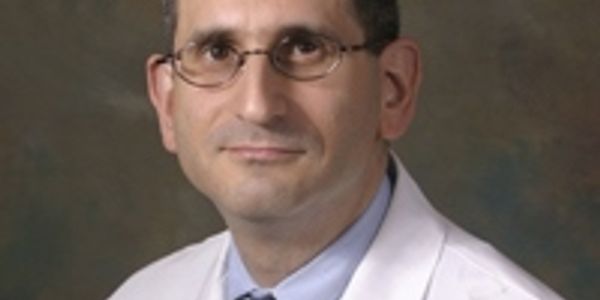NOV 20, 2013 | 10:00 AM
2013 has proven to be a year of paradigmatic shifts in molecular diagnostics reimbursement policy. In this session, we will review and analyze these key policy and payment developments and di...
NOV 20, 2013 | 8:00 AM
As the scientific evidence base for pharmacogenetics continues to expand, the use of such information in clinical management and drug development will be in demand.
The FDA advises that the...
OCT 17, 2013 | 12:00 PM
The discovery of proteinaceous disease biomarkers and their clinical validation is critically important for the enablement of molecular diagnostics and ultimately, precision medicine. In spit...
OCT 17, 2013 | 11:00 AM
C.E. CREDITS
Curative therapy for metastatic disease in solid malignancies remains frustratingly elusive due to the long recognized problem of tumor cell heterogeneity and emergence of treatment resistant...
OCT 17, 2013 | 9:00 AM
C.E. CREDITS
Cancer metastases develop when tumor cells known as circulating tumor cells (CTCs) are shed from a tumor, circulate through the blood stream and colonize a distant tissue. The number of CTCs...
OCT 17, 2013 | 7:00 AM
Whenever there is cell death, apoptotic cell free DNA fragments appear in the circulation of the host. These fragments, typically 145-160 base pairs in size, represent a minute fraction of to...
OCT 17, 2013 | 6:00 AM
The widespread adoption of precision medicine in oncology requires: a compendium of therapies targeting the genetic vulnerabilities of cancer; the diagnostic tools capable of generating a pr...
OCT 16, 2013 | 1:00 PM
C.E. CREDITS
Cancer cells have historically been classified by microscopic analysis of blood smears and tissue sections. Current technologies use molecular techniques to categorize and classify tumor cell...
OCT 16, 2013 | 12:00 PM
The effective implementation of personalised cancer therapeutic regimens depends on the successful identification and translation of informative biomarkers to aid clinical decision making. Th...
OCT 16, 2013 | 11:00 AM
Survival rates for early stage non-small cell lung cancer (NSCLC) remain unacceptably low compared to other common solid tumors. This mortality reflects a weakness in conventional staging, a...
As Chief of Scientific Intelligence at the John Wayne Cancer Institute, Dr. Hoon interacts with external academic, industry, and government agencies to develop innovative translational rese...
AUG 22, 2013 | 3:00 PM
C.E. CREDITS
The use of ultrahigh throughput diagnostic tests that determine genetic sequence variation to guide patient care is rapidly expanding, fueled by the enormous growth in sequencing platform dev...
AUG 22, 2013 | 2:00 PM
The role of the human genome in normal and patho-biology is crucial. Applied in cancer care and in a variety of unknown disorder settings, it can provide key insights and crucial diagnostic/p...
AUG 22, 2013 | 12:00 PM
C.E. CREDITS
It is widely accepted that approximately 85% of known disease-causing DNA variants affect the exons and splice junctions, which is about 1% of the whole genome. As a result, Clinical Exome Se...
AUG 22, 2013 | 10:00 AM
C.E. CREDITS
The advent of massively parallel sequencing by next generation sequencing platforms now allow genomic approaches for individualizing healthcare. Genomic sequencing data reveals variants in ge...
AUG 22, 2013 | 7:00 AM
Rheumatoid Arthritis (RA) is a heterogenous disease that affects 1.5% of the population. Similar to cancer, early detection coupled with an effective treatment strategy can significantly impr...
AUG 21, 2013 | 5:00 PM
Dr Ivan Brukner entered into genomic era back in 1989 (ex-Yugoslavia), trying to describe and solve repeating sequence "branching motif problem" in building whole genome sequence. Next 5-10...
Approximately 98% of the human genome comprises noncoding DNA, the function of which is largely unknown. Intriguingly, more than 85% of single nucleotide polymorphisms identified to be associ...























